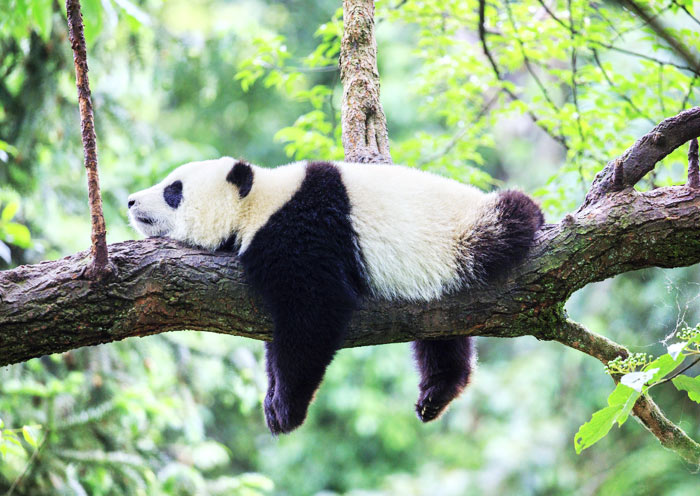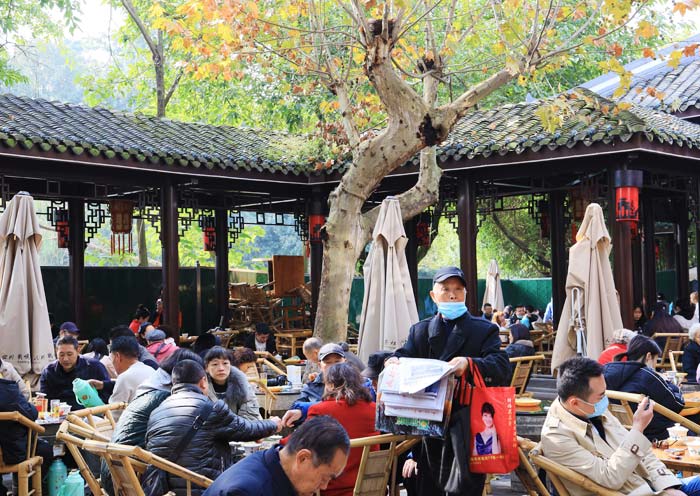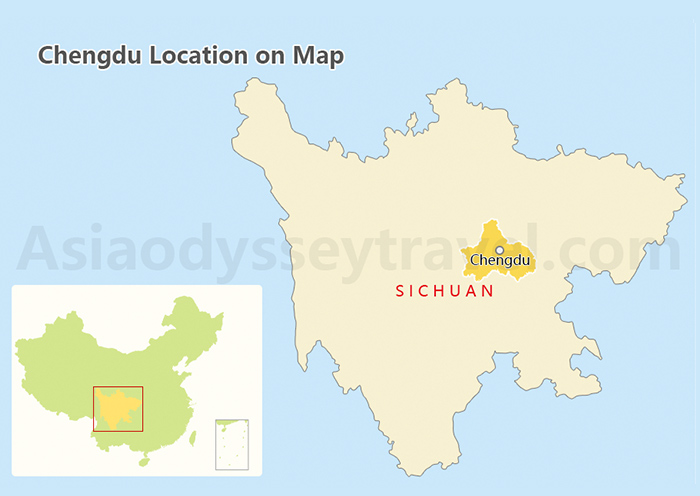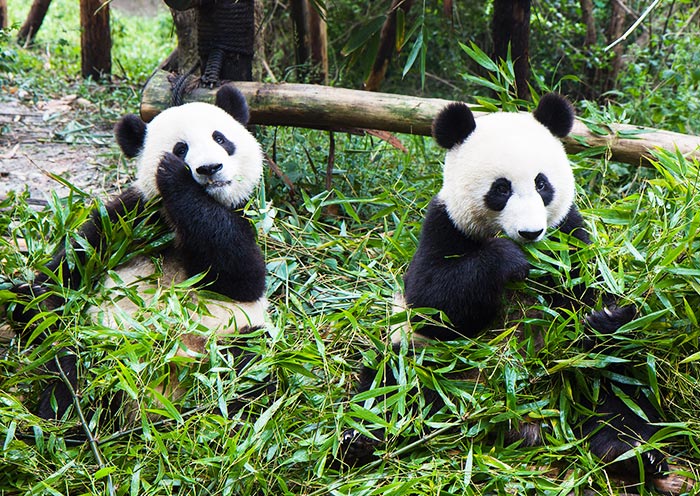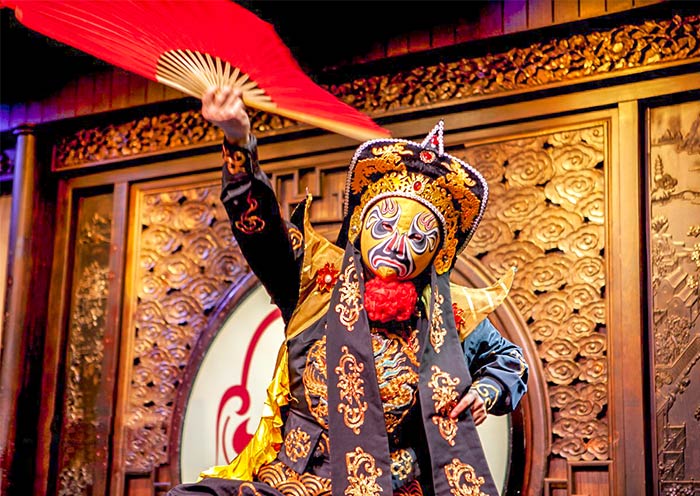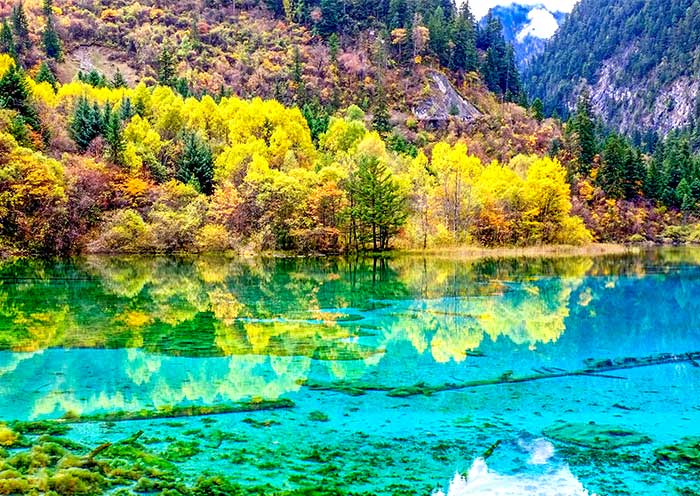Mount Qingcheng Chengdu Facts: Know Qingcheng Mountain Quickly

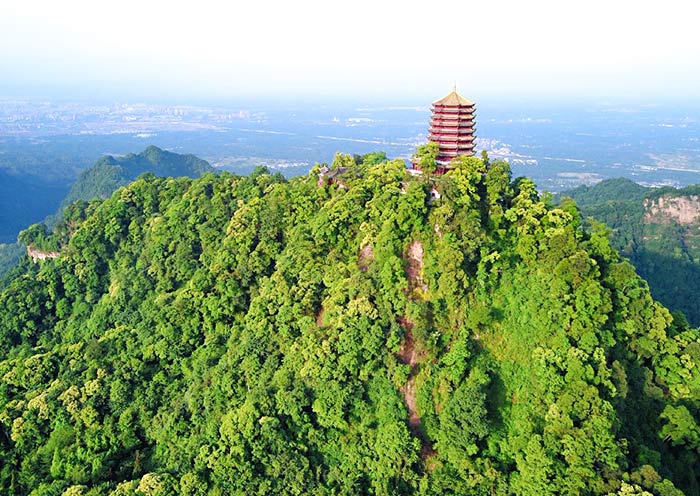
Address: Qingchengshan Road, Qingchengshan Town, Dujiangyan City, Chengdu, Sichuan Province.
Elevation: 1260 meters
Entrance Fee:
The Front Mountain: 90 yuan ($12.63) per persion
The Back Mountain: 20 yuan ($2.81) per person
Opening Hours: 8:00-17:00 (3.2-11.30) 8:00-18:00 (12.1 -3.1)
Recommended Visiting Time: 2 hours
Highlights: the Jianfu Palace, the Shangqing Palace, and the Tianshi Cave
Taoism of Mount Qingcheng: Birthplace of Taoism
You may have seen the Tai Chi diagram (Yin and Yang) and the talismans drawn on the walls of some Chinese houses. Most people would roughly categorize these as part of Chinese folk culture, but in fact, they are part of Taoism, a native Chinese religion.


Unlike Buddhism, which originated in India and flourished in China, Taoism is the only religion founded in China by the Chinese people. It was a spiritual pillar for China's long-lasting feudal dynasties. Let's travel back in time to 143 AD and imagine walking on Mount Qingcheng. You would encounter a group of people seeking self-cultivation, health, and immortality. Among them, a mysterious and wise leader named Zhang Daoling, the founder of Taoism, believed that the tranquility of Qingcheng Mountain was ideal for the development of his religion.
From Qingcheng Mountain, Taoism spread across the vast nation and reached its peak in the following 600 years. Qingcheng Mountain has since become the cradle of Taoist culture. Its teachings, including the core concepts of yin and yang, have even been integrated into the daily lives of the Chinese people.
Highest Value of Taoism: Dao
Taoist theory is based on the Tao Te Ching, a work created by the Chinese thinker Laozi in the 7th century BC.
Taoism places the highest value on the "Dao", which is equivalent to the fundamental laws of nature as we understand them today. Taoists believe that everything in the universe is derived from the Dao. The practice of Taoism aims to improve the quality of life through introspection and a calm attitude towards worldly affairs. The Taoist concept of yin and yang, represented by the Tai Chi diagram, expresses the idea that all things are interconnected and interdependent.
Taoist Practice: Alchemy, Talisman, Tai Chi
Taoist practices primarily involve alchemy and the use of talismans. Taoist priests would combine various minerals, herbal medicines, and mysterious ingredients in special furnaces to create elixirs, making them the earliest chemists in China. Talismans, composed of special characters and symbols, were used to ward off evil spirits, bring good fortune, and cure illnesses, similar to the magic spells in Harry Potter.
Even in modern times, Chinese practices such as Tai Chi, used for health and fitness, and the custom of placing talismans on houses for protection are influenced by Taoism.
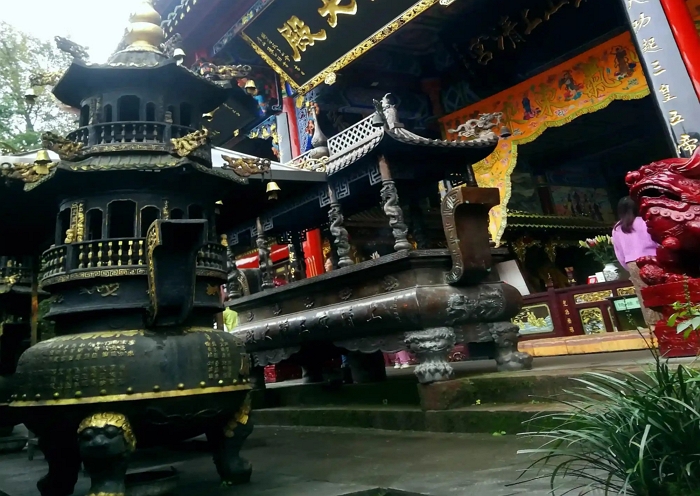
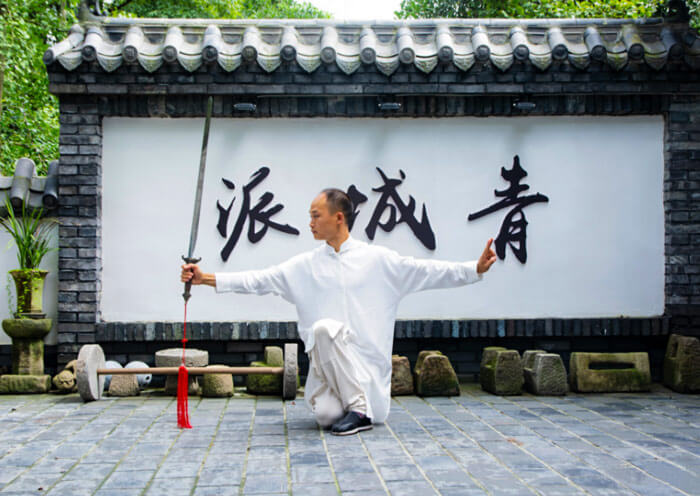
Best Tings to See: Top Attractions of Mount Qingcheng
The Jianfu Palace (建福宫) - Taoist Temple Gateway
Want to dip your toes into Taoism? Jianfu Palace is the perfect starting point.
As you enter the front gate of Mount Qingcheng, Jianfu Palace comes into view. This is the first significant Taoist temple you encounter upon entering the scenic area. Built in 724 AD during the Tang Dynasty, the name "Jianfu" means "to build happiness," signifying the divine's intention to bring blessings to the people. This is often seen as a panacea for those seeking spiritual solace. Standing at the entrance of the temple, one can observe that traditional Chinese Taoist temples are primarily constructed of wood, with green tile roofs and upturned eaves. The temple complex, consisting of two courtyards and three halls, is built into the mountainside. Sometimes, Taoist priests performing rituals.


The Shangqing Palace (上清宫) – Heart of Taoist Palaces
Shangqing Palace stands as the crown jewel among the Taoist temples of Qingcheng Mountain, making it an indispensable part of any pilgrimage.
At an elevation of 1180 meters on the front peak of Qingcheng Mountain, we reached the Shangqing Palace. This is not only a renowned Taoist temple but also a place where culture and nature intertwine. "Shangqing " signifies the dwelling place of a particular Taoist deity, making it feel like a celestial realm where one can attain higher levels of spiritual cultivation. Dating back to the 3rd century AD, the temple houses deities, precious steles, and stone carvings. Surrounded by mist and the sound of rushing water, a leisurely stroll around the palace reveals two ancient gingko trees flanking the stone steps. The group found great pleasure in sitting together at the entrance, sipping tea, and taking in the breathtaking scenery.
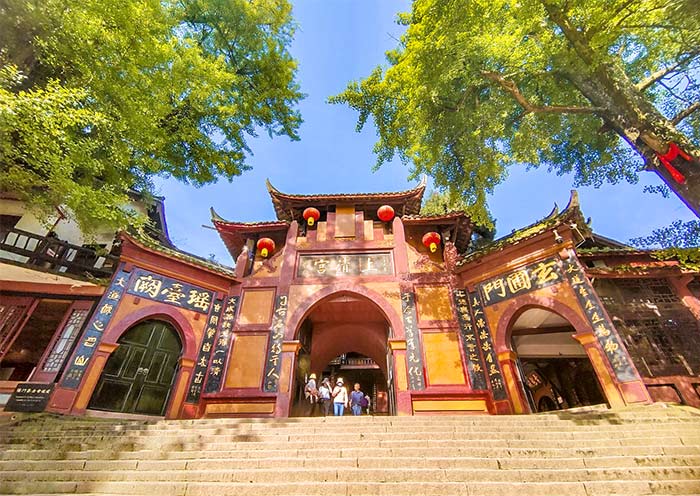
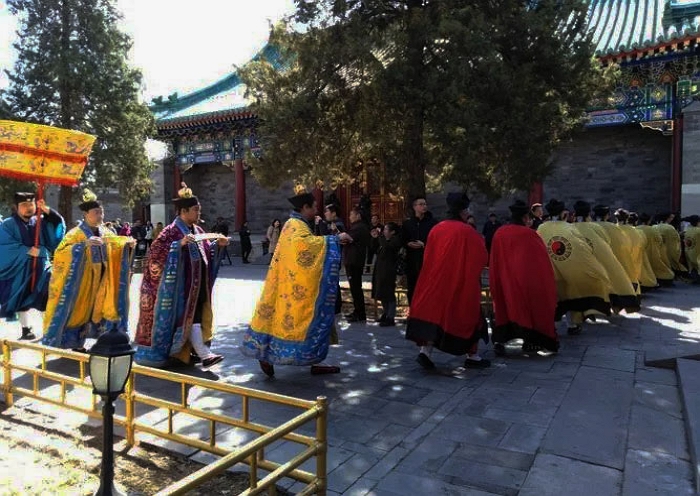
The Tianshi Cave (天师洞) – Traces of Zhang Daoling
Want to follow in the footsteps of Zhang Daoling? Tianshi Cave, where he is said to have meditated, is a must-visit.
Located on the back mountain of Qingcheng Mountain at an altitude of over 1,000 meters, Tianshi Cave is one of the main Taoist temples on the Chengdu mountain. It was originally built in the 6th century AD. According to legend, Zhang Daoling, the founder of Taoism, cultivated and ascended to immortality here. The main hall of Tianshi Cave houses a plaque inscribed by Emperor Kangxi of the Qing Dynasty in the 17th century. Upon entering the hall, visitors will first see a statue of Zhang Daoling. As you continue, you can explore the preserved inscriptions and murals within the cave. After the tour, don't miss the ancient ginkgo tree at the entrance of Tianshi Cave. With an age of over 1,900 years, it has stood tall for centuries, witnessing the changes of the world.
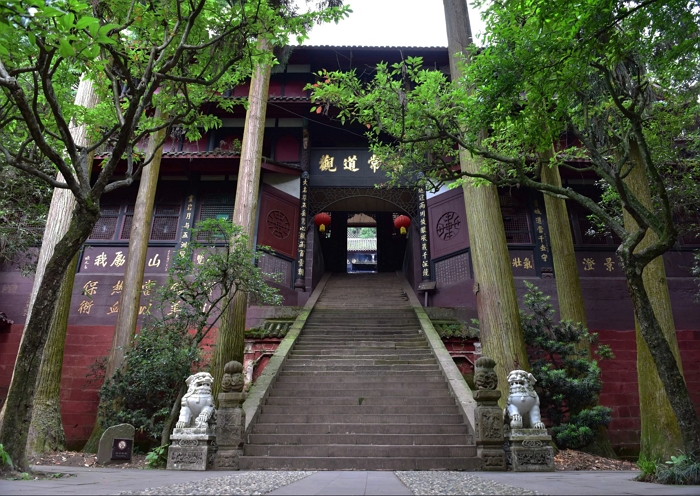
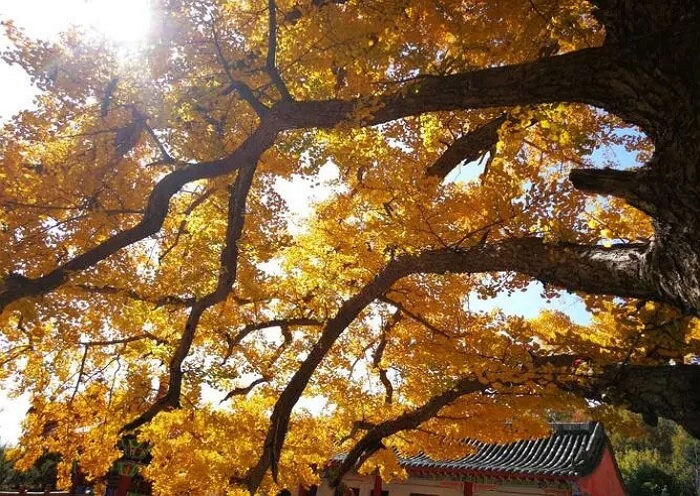
Laojun Pavilion (老君阁) - Peak of Mount Qingcheng
Climbing high and looking far, from the peak of Qingcheng Mountain, one can overlook the legendary 36 Peaks of Qingcheng Mountain. In fact, there are 18 peaks. When viewed from the front mountain, there are 18 shaded peaks, and when viewed from the back mountain, there are 18 sunlit peaks. The highest peak is Lao Xiao Ding, which is 1260 meters above sea level. The Laojun Pavilion is located here.
The Laojun Pavilion is the highest Taoist temple on Qingcheng Mountain. It is a nine-story building, round at the bottom and square at the top, symbolizing the ancient Chinese philosophical concept of the movement of heaven within stillness. The exterior is in the shape of a tower with a pointed top. Inside the Laojun Pavilion, there is a deified sculpture of Laozi, the Chinese philosopher from the 7th century BC.
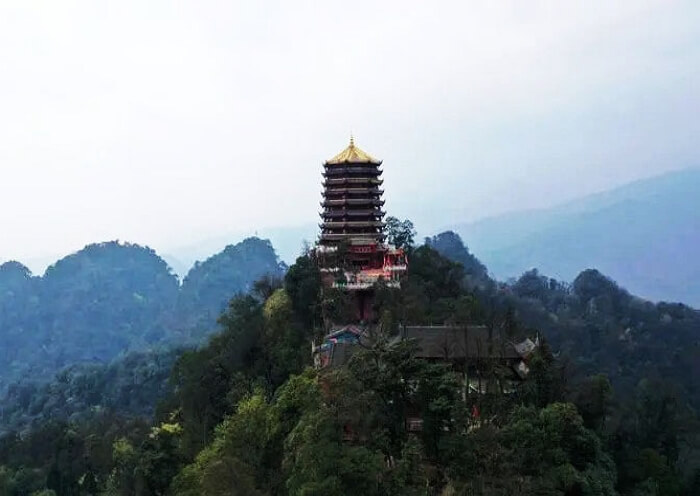
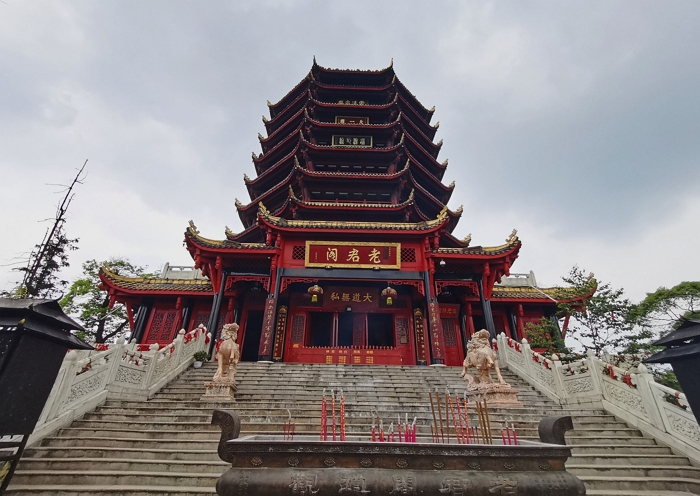
Tai Chi (Taijiquan) from Qingcheng Mountain (青城太极)
If you're interested in learning about traditional Chinese martial arts, Qingcheng Tai Chi (Taijiquan) is a great place to start. In 2021, Qingcheng Kung Fu (Qingcheng Wushu) was officially inscribed on China's National Intangible Cultural Heritage List. Qingcheng Mountain is not only renowned for its lush natural scenery and profound Taoist culture but also as one of the primary birthplaces of Tai Chi, a practice widely adopted by Chinese people today as a way to improve their health. The term "Taijiquan" itself is derived from the Taiji concept, which embodies the core principle of the interplay between yin and yang.
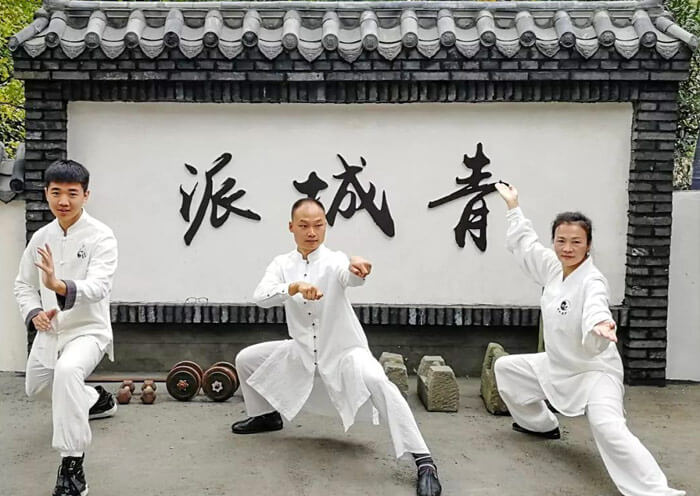

Qingcheng Tai Chi emerged alongside the development of Taoism. Taoists sought immortality and employed martial arts as a practical method to cultivate their bodies, demonstrating how fantasy can lead to scientific exploration. Practicing Taijiquan in the fresh mountain air, with its gentle yet powerful movements, allows practitioners to stretch their bodies, receive positive psychological suggestions, and reduce stress and anxiety by mobilizing their joints. By prioritizing physical health, one can gain a deeper understanding of the laws governing the universe.
Qingcheng Back Mountain (青城后山)
Looking up, you see the sun but feel no heat. The lush greenery filters the heat time and again. The back mountain of Qingcheng is more primitive compared to the front mountain. A less-traveled hiking route through the back mountain offers scenic views, wooden pathways, and natural waterways. Although fewer Taoist temples are present, this area was historically a place of spiritual cultivation for Taoists. The front mountain, on the other hand, is more often associated with everyday life and worldly concerns. The back mountain of Qingcheng is not connected to the front mountain and is about 12.6 kilometers away.
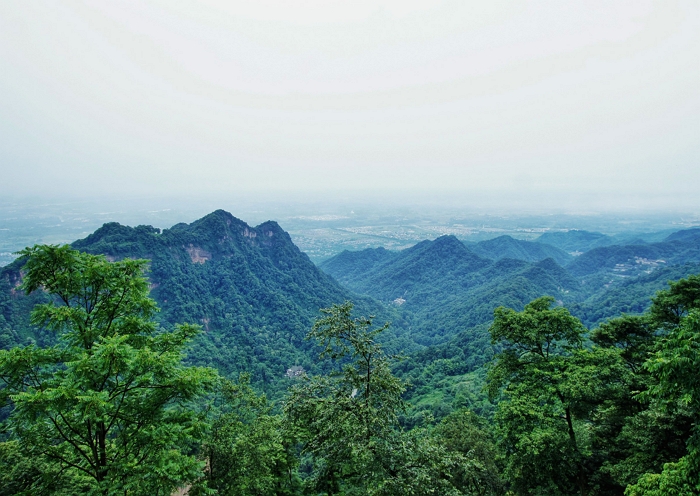

Along the mountain path, Feiqian Gorge and Wulong Gorge are the highlights of the back mountain. In Feiqian Gorge, you can admire the "Double Spring Water Curtain" formed by waterfalls and peculiar rocks. In Wulong Gorge, you can explore the rugged valleys and scenic boardwalks.
Most Recommended Way Mount Qingcheng Front Mountain: Boat Plus Cable Car
The front mountain of Qingcheng Mountain offers a sense of seeking the Dao as one ascends. Arriving from the distant West to the East, one yearns for tranquility amidst the bustling crowds gathered at the Taoist temples during the ascent, yet also desires to encounter others in the serene atmosphere of the winding paths on the descent. Upon returning to the city, despite the bustling environment, one gains an inner peace and a renewed strength to face each day. This is the Taoist spirit gained from visiting the front mountain of Qingcheng, akin to the yin and yang, where the bustling and the serene coexist.
The front mountain of Qingcheng Mountain is suitable for tourists who want to learn about ancient Taoist architecture and experience the Taoist spirit. Compared to tiring hiking, it is recommended to choose a more relaxed way to travel between the ancient temples, first taking a boat and then a cable car to reach the mountain top.
Recommended Visiting Time: 2h - 3h
Step 1: (Take Boat -> Cable Car) From Jianfu Palace to Shangqing Palace
Your first stop will be Jianfu Palace (建福宫) at the entrance of Qingcheng Mountain. Built in 730 AD, you can learn about the Taoist figures enshrined in the temple. Afterwards, take a small boat across the serene Yuecheng Lake (月城湖) located in the mountains. Then, take the Baiyun cable car for about 5 minutes to reach the top of the mountain and visit Shangqing Palace (上清宫). Continue walking to Laojun Pavilion (老君阁), located at the highest peak of Qingcheng Mountain (1260 meters). The pavilion is 33 meters tall and has nine floors, with a square base symbolizing the earth and a round top symbolizing the sky. From Laojun Pavilion, you can enjoy a panoramic view of the entire mountain range.
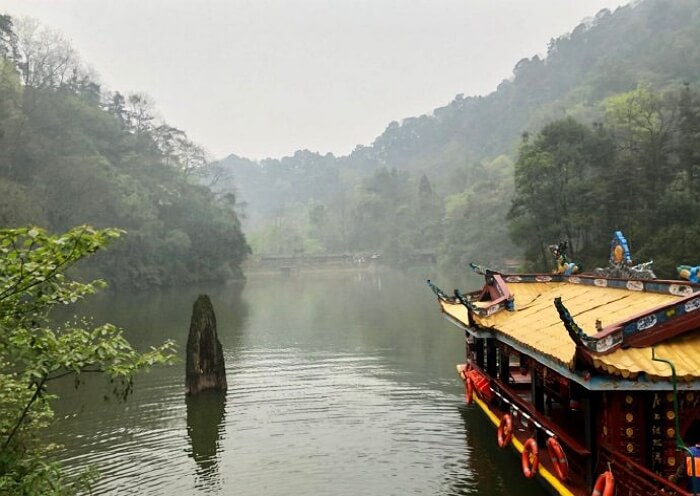
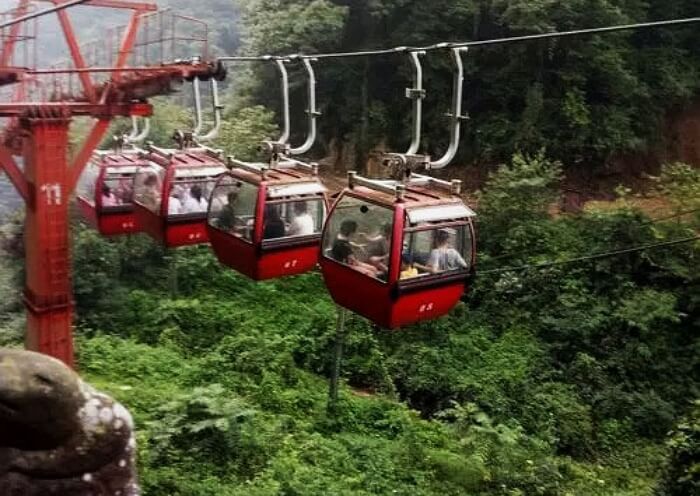
Boat Ride:
- One-way Ticket: 5 yuan
- One-way duration: 3mins
- Opening Hours: 08:30-17:30
Cable Car:
Ticket Price: round trip 60 yuan per person
One-way duration: 6mins
Operating Hours: 08:30-17:30
Step 2: Go Back the Same Way We Came
After admiring the beautiful scenery, we will return the same way we came. You can choose to have something to eat at the foot of the Qingcheng Shan.
Explore Qingcheng Back Mountain: Mount Qingcheng Hike
The back mountain of Qingcheng Mountain is a hiker's paradise, featuring stunning waterfalls, lush forests, and winding paths. With a easy 22-kilometer trail, it's perfect for those looking to escape the crowds and enjoy the great outdoors.
- Route: Tai’an Ancient Town (泰安古镇) - Wulong Gorge (五龙沟) - Youyi Village (又一村) – Baiyun Temple (白云寺) – Baiyun Ancient Village (白云古寨) – Cuiying Lake (翠映湖) – Feiquan Gorge (飞泉沟) – Tai’an Ancient Town (泰安古镇)
- Operating hours: 5h - 7h
After arriving at the Qingcheng Mountain Back Mountain Scenic Area, follow the river until you reach the Tai’an Ancient Town (泰安古镇). Tai'an was once a vital transportation hub connecting the southwestern part of China to the provinces further north. Within the town, there's a Buddhist temple dating back to the Tang Dynasty, where you can explore the stupa, ancient steles, and a venerable gingko tree. After a 30-minute walk from Tai'an, you'll reach the Wulong Gorge (五龙沟), the first highlight of the back mountain.
Continuing your journey, you'll embark on a two-hour hike to Youyi Village (又一村), a quaint hamlet nestled halfway up the mountain, perfect for a rest and a meal. Then, you'll spend another hour hiking to Baiyun Temple (白云寺), surrounded by pristine forests and cascading waterfalls. A further two-hour trek through Baiyun Ancient Village (白云古寨) and past the serene Cuiying Lake (翠映湖) will lead you to Feiqian Gorge (飞泉沟), another gem of the back mountain. Since the hiking route forms a loop, you'll eventually return to the starting point, Tai'an Ancient Town.

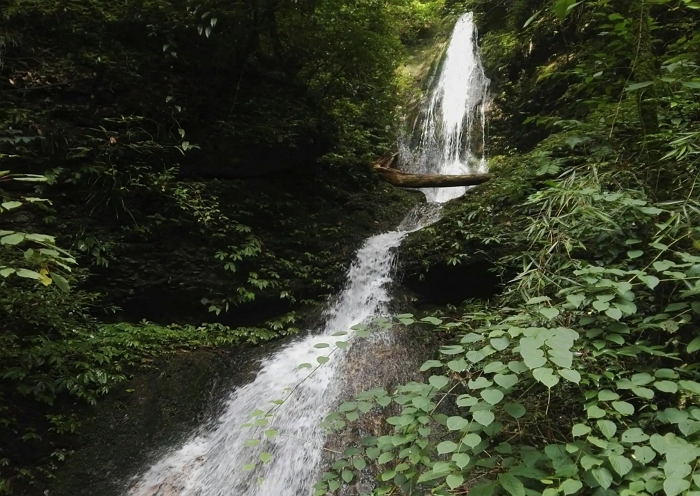
How to Get to Mount Qingcheng from Chengdu/Dujiangyan
Get to Qingcheng Mountain from Chengdu
By Train
Multiple trains depart daily from Xipu Railway Station, located at 148 Xueyuan Road in Chengdu, Sichuan, bound for Qingcheng Mountain. The day trip from Chengdu takes about half an hour and costs only 10 yuan ($1.40) per person.
Upon arrival at Qingchengshan Railway Station, you can catch a direct bus to the back mountain for 25 yuan ($3.51) roundtrip.
By Bus
Buses run frequently from Chengdu Xinnanmen Station to Qingcheng Back Mountain, with departures every half hour between 7:30 AM and 2:30 PM. The trip takes approximately 1.5 hours and costs around 25 yuan ($3.51).
How to Plan A Chengdu Tour | Useful Chengdu Planning Guide
Top 15 Things to Do in Chengdu - Chengdu Attractions & Places to Visit
Get to Qingcheng Shan from Dujiangyan
You can take a direct bus from Dujiangyan Passenger Transport Center to the back mountain of Qingcheng Mountain. The fare is 9.5 yuan ($1.33), and the journey takes approximately one hour.
Get to Qingcheng Shan by Private Car
Want to get to Qingcheng Mountain faster and more comfortably? Consider a private car service. Whether you're starting from Chengdu or Dujiangyan, a private car can be at your service whenever you're ready. Enjoy a 1.5-hour journey from Chengdu or a quick 20-minute ride from Dujiangyan. This convenient service is provided by Asia Odyssey Travel - we offer all-inclusive tours to Mount Qingcheng Chengdu with private car transfers straight to the Mt. Qingcheng. We also offer Chengdu guide and its itineraries for you.
As China travel experts with over 13 years of experience, we can design a custom itinerary to meet your exact needs. Our services include top-notch accommodations, delicious cuisine, convenient transportation, and knowledgeable guides.
Best Time to Visit Qingcheng Mountain (Temperature and Clothes)
The ideal time to hike Qingcheng Mountain is during the spring (March-May) and autumn (September-November) when the weather is mild. The mountain hosts a climbing festival in spring. While summer (July-August) is suitable for escaping the heat, hikers should avoid rainy days due to slippery trails.
For spring and autumn visits, with temperatures between 12 and 20 degrees Celsius, a T-shirt layered with a light jacket is ideal. Summer is warmer, ranging from 21 to 30 degrees Celsius, making short sleeves and shorts comfortable, but a light jacket is still advisable for cooler evenings.
Plan Your Mount Qingcheng Trip with Asia Odyssey Travel
Usually, travelers will arrange about half day to visit Mount Qingcheng. If you are fond of the Dujiangyan Irrigation System, you may need 2 days to tour Mount Qingcheng and the Dujiangyan Irrigation System.
For a 2-day classic itinerary, start your trip from Chengdu. You will first take a city tour, visiting the Chengdu Panda Base, Wenshu Monastery, Renmin Park and Jinli Street. Then, the next day, head to the 2000-year-old Dujiangyan Irrigation System for half day. And you will spend another half day ascending the Mount Qingcheng to enjoy the essence of Taoism. To cover the in-depth travel to be a panda volunteer and Kung Fu master, you can take our 2 days Dujiangyan Panda Volunteer Qingcheng Kung Fu Tour.
Two Days Highlights Tour (Chengdu, Dujiangyan Irrigation System, Mount Qingcheng):
Day 1: Chengdu City Tour (Chengdu Panda Base, Wenshu Monastery, Renmin Park and Jinli Street)
Chengdu Itineraries | How to Spend 1 Day, 2 Days, 3 Days, 4 Days in Chengdu
Day 2:The Dujiangyan Irrigation System - Mount Qingcheng
Two Days In-depth Travel (Panda Volunteer and Kung Fu Lesson):
Day 1: Dujiangyan Panda Volunteer Tour & Qingcheng Kung Fu Lesson
Day 2: Qingcheng Kung Fu Lesson & Dujiangyan Irrigation System
